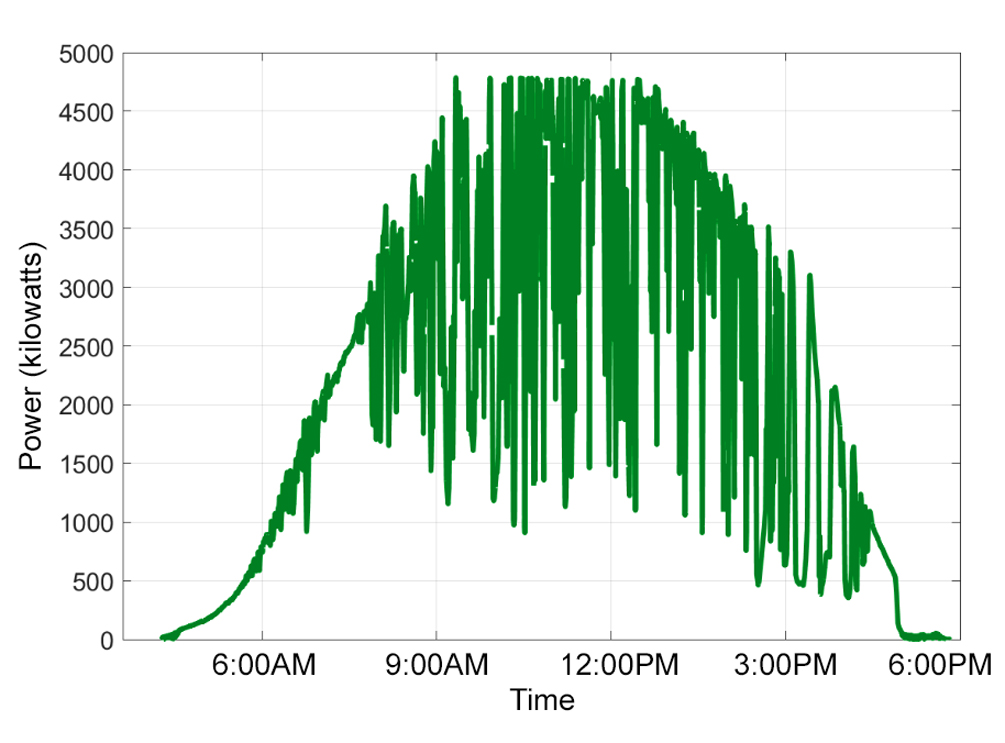Can Variable Solar Generation Cause Lights to Flicker?

An EPRI study of five solar photovoltaic (PV) plants across the United States found that their contribution to flicker was insignificant.
Flicker refers to fluctuation in a light’s brightness resulting from rapid voltage variations in the power grid. It is commonly associated with fluctuating industrial loads such as steel mills and electric boilers. Widespread deployment of variable solar generation is expected to increase voltage variations, raising concerns of more widespread flicker and other adverse impacts on power quality.
Beginning in 2012, researchers in EPRI’s Integration of Distributed Energy Resources program deployed power quality meters at several solar PV plants across the country to measure solar irradiation, power generation, voltage and frequency variation, and other data—including flicker. Analysis of two years of flicker data at a subset of these plants in North Carolina, Arizona, Georgia, and Tennessee indicated that high solar variability did not increase flicker on distribution feeders, even at points close to the solar installations. In fact, higher flicker readings on feeders tended not to coincide with solar variability. The study concluded that cloud-induced changes in PV generation occur too slowly to contribute to flicker.

Key EPRI Technical Experts:
Aminul Huque
For more information, contact techexpert@eprijournal.com.

